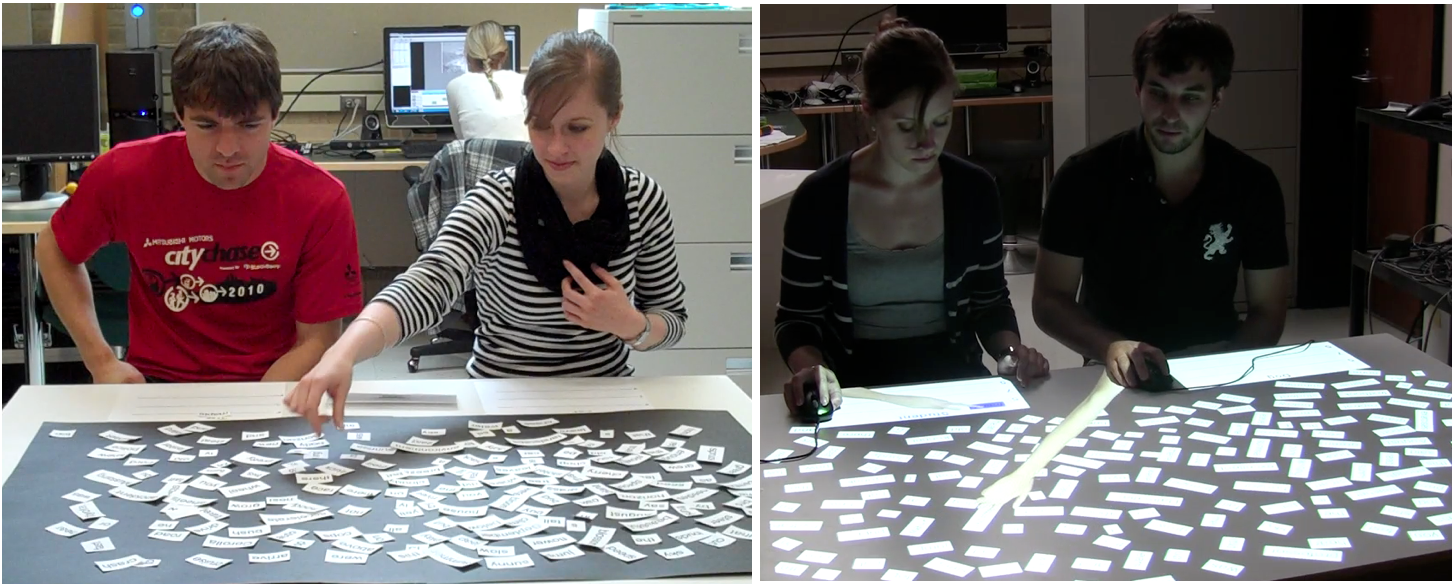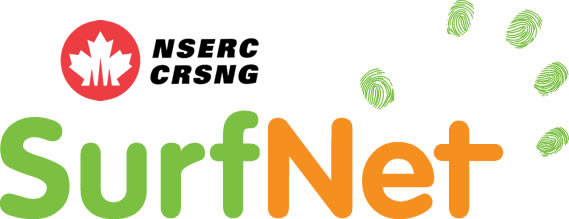Awkward Embodiments: Proxemic Effects of Different Arm Avatars
Tables are great for multi-user, collocated collaborative work; we use them extensively while working with others. Interactive tables should be at least as useful as non-interactive tables, and can provide additional support (e.g., save state). Designers have used real tables as a guide when designing interactive tables; however, the real world is different from the digital world, particularly in physical interactions over a tabletop (e.g., reaching for an item). For example, the physicality of real arms means that two arms cannot occupy the same space simultaneously. Real world limitations often do not exist in the digital world (e.g., two arm embodiments controlled with mice can occupy the same space simultaneously), but we do not yet understand the implications of removing these limitations.
In addition, people behave differently over paper-based and interactive surfaces. Previous researchers have showed that people working on shared interactive surfaces did not obey the social protocols of the physical world (e.g., they stole objects others were working on). This behaviour rarely occurs in the real world. Without understanding a fundamental behaviour like reaching, and how it is different in the digital world, designers create applications that cause confusion and frustration for users. In the example above, users and designers alike expected others wouldn’t steal items people were working on. When others violate this unspoken rule, users are confused (where did that go?) and frustrated (Hey, I was working on that!). These expectations stem from a set of unspoken rules in the physical world called social norms. A common social norm is the elevator norm, which states that riders should face the doors. Another norm is table manners. Instead of reaching across the table for the saltshaker, we should ask someone to pass it to us. A breach of a norm causes uncomfortable feelings among others.
We need to understand close-proximity physical interactions, and the social norms that guide them, in collocated tabletops because that’s how we’ve evolved our interactions with others; however, we know little about these interactions in the physical world, nor about the translation from physical to digital. In this project, we aim to provide an initial understanding of one close-proximity physical interaction: reaching behaviour. We do this by comparing groups’ behaviours over a physical and interactive tabletop. We compared a paper-based task to a digital version of the same task. First, groups of two created haikus from a set of paper word cutouts on a tabletop. We found that, among other behaviours, people do not cross arms; group members stated that it was rude to cross over or under another person’s arm. We call this the no-crossing social norm, as it appears consistently and without any explicit discussion among the group members. We then built a digital version of the haiku task where people could move digital words using mice with arm embodiments (a visual link between the cursor and the person’s physical location), or using touch pens. During initial testing, we found people don’t cross physical arms when using touch pens, but do cross arm embodiments when using mice. Thus, the no-crossing social norm does not always guide people’s behavior on digital tables.
This difference between the physical and digital worlds means that people cannot depend on the natural rules (the social norms) of the physical world to guide people’s behaviour in the digital world. To better understand these differences, we wondered whether we could induce people to behave more as they do in the physical world. We hypothesized that the more closely an arm embodiment resembled a real arm (such as a picture of the person’s actual arm), the more people would feel awkward touching, and thus people would cross less. In addition, we hypothesized we could cause people behave according to the physical social norm by introducing a cost to crossings.
This project makes three contributions. First, we provide an initial understanding of reaching behaviour in the physical world, and how it translates to the digital world. Second, we show the effects of increasing the realism of arm embodiments on human behaviour. Third, we demonstrate that designers can introduce a cost to behaviour to change how the group behaves.
Images and Videos

Real-world interaction (left) and digital version of the task (right)
Partners
NSERC – SurfNet
 |
 |



